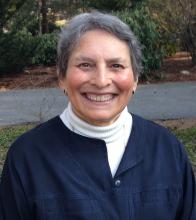These two essays provide closing reflections on this compilation of essays and chart a course forward for the next generation of place-based efforts to foster greater diversity and opportunity across the urban landscape.
In “The Person-Role-System Framework as a Key to Promoting Racial Equity,” JaNay Queen Nazaire tackles the question of how systems and societal structures can realistically be disrupted and transformed to shift from perpetuating racial equity to advancing antiracist policy and practice. She argues that systems change begins with mindset and behavior shifts at the level of individual decision-makers and draws from essays in the volume that discuss narrative shifts as core to the change process. She introduces the person-role-system framework as a tool for recognizing “the dynamic interplay between the mental viewpoints of people as individuals, their responsibilities in their personal and professional roles, and the overall impact of their actions on a system.” Her exhortation seems particular timely in the current moment of national upheaval against enduring systemic racism as she calls for “reckoning with history, shifting beliefs, building relationships and reshaping cultural and institutional values to center humanity, share power, and work under the belief that our fates are shared.” Nazaire concludes her essay with four questions for readers to ponder, including: “Are you taking the right everyday actions to promote more equitable outcomes, when you have the opportunity? Are you taking those actions effectively? Are there actions you take that may be driven more by Whiteness and singular power as the norm rather than humanity, shared power and collective accountability?”
In “Taking Stock: What May Work and Implications for the Future of the Mixed-Income Approach” Rachel Bratt has bravely embraced her role as the author of the final essay in the volume and stepped up to the herculean task of reviewing and reflecting on the entire essay collection. She carefully organizes her review around the questions about mixed-income communities posed in the framing essay by co-editors Amy Khare and Mark Joseph that opened the volume, including equitable sharing of revitalization benefits, social outcomes, promising innovations, threats to inclusion and equity, and actionable implications for stakeholders. Drawing from literally each of the essays, she provides a comprehensive roadmap of the key topics, policies, and strategies explored by volume essays. While cataloging the numerous emerging innovations and approaches detailed in the essays, she expresses disappointment in how little definitive evidence there is about the social benefits of mixed-income strategies for low-income households, hence her essay title: what may work. She calls for a more robust research agenda to advance the evidence base and conveys her hope that this disruptive societal moment might “yield momentum to assess how mixed-income housing could contribute to more racially just housing patterns.”
Taking Stock: What May Work and Implications for the Future of the Mixed-Income Approach
- Rachel Bratt, Tufts University
Rachel G. Bratt, Professor Emerita, Tufts University, has focused on a range of current and historical U.S. federal and state housing policies and programs, and the role of nonprofit housing organizations in producing affordable housing. She is the author or co-editor of three books, and has written or co-authored dozens of academic and popular articles and book chapters. In her role as a Visiting Scholar at the Federal Reserve Bank of Boston, in 2019 she completed a series of papers concerning HUD/FHA guidelines concerning mortgagors in end-stage default and foreclosure.
The Person-Role-System Framework as a Key to Promoting Racial Equity
- Janay Queen Nazaire, Living Cities
As Chief Strategy Officer at Living Cities, Dr. JaNay Queen convenes and leverages public, private, and philanthropic stakeholders in American cities, identifies and tests innovative approaches to deploy millions in public and private capital for investing in people of color, and harnesses and facilitates the power and resources of 19 multibillion-dollar foundations and financial institutions working collectively towards systems change. Throughout her career, Dr. Queen has worked across sectors, at every level of government, domestically, and internationally to provide innovative, creative, and solution-focused leadership and strategy to address social and economic challenges for children, adults, families, and communities.



